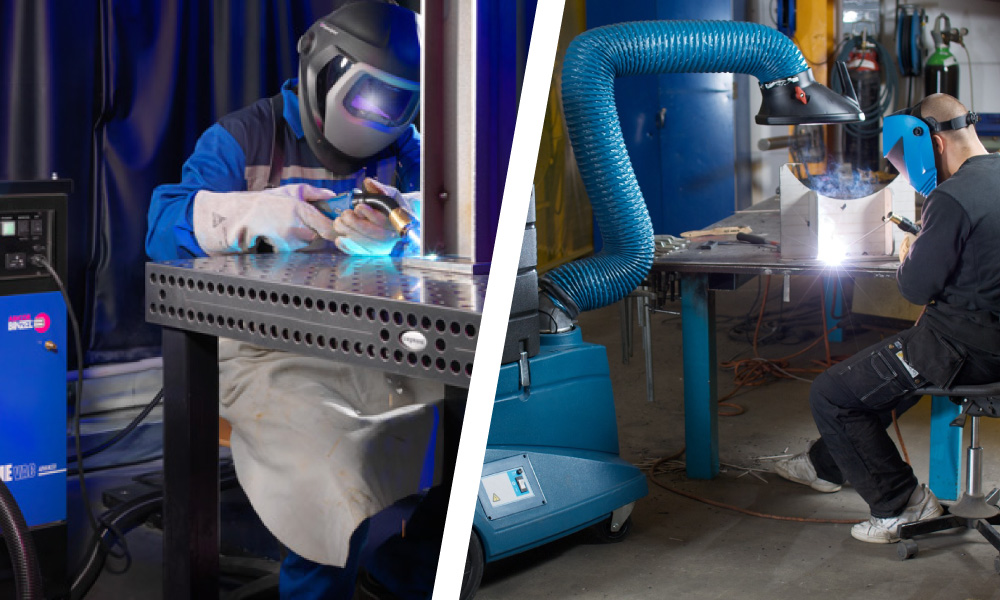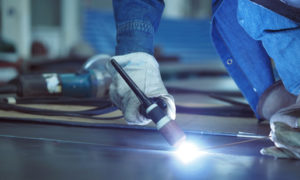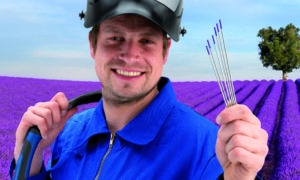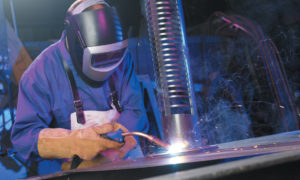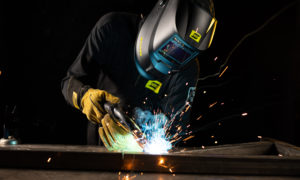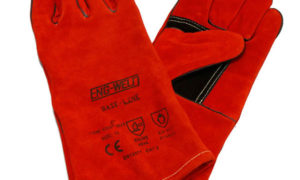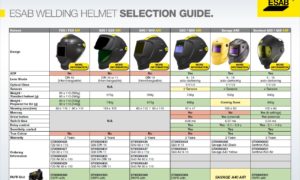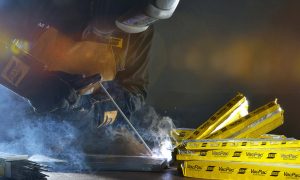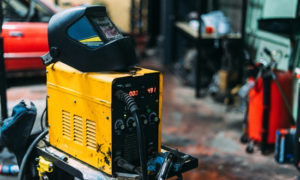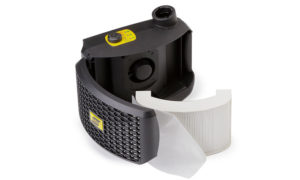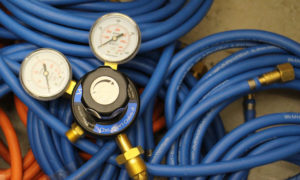Accidentally breathing in welding fumes can be highly hazardous to health and cause issues like nausea, dizziness and eye irritation at the most minor level and major problems like lung cancer at the most severe, so it is important to use the correct fume extraction equipment when working on welding projects.
As a result, new enforcement expectations require all businesses undertaking welding activities to ensure that effective engineering controls are provided and used correctly to control fumes. Lower fume producing welding, such as TIG, usually only requires LEV protection and it is advised that larger fume producing welding types such as MIG & MMA require a double pronged defence of respiratory protective equipment (RPE) and local exhaust ventilation (LEV).
LEV supervision and training is highly recommended by the HSE to ensure that workers know how to effectively use LEV, how to check it is working efficiently, and to ensure they are following safe working procedures.
There is no ‘one size fits all’ solution for every welding type and application and so it is advised that an occupational hygiene air monitoring survey may also be required to confirm the effectiveness of fume controls. In this guide we’ve broken down the pros and cons of on-torch fume extraction and mobile fume extraction, so you can find the safety solution that is right for your application.
On Torch Fume Extraction – The Cons
When it comes to fume extraction torches, there are several common cons that come to mind for most welders. These include fume extraction torches being heavy and unwieldy to work with, not removing as much smoke as expected, being too large to access the weld joints and creating poor weld quality.
Workers should be aware of the limitations of this method, as with all fume extraction methods and it is recommended that welders use an FFP3 disposable mask for work under an hour and a PAPR (Powered Air Purifying Respirator) Unit with a minimum assigned protection factor of 20 (APF20) if they are welding for over one hour per day.
On Torch Fume Extraction – The Pros
Despite some hesitations around using fume extraction torches based around their weight and effectiveness, there are several pros to be considered. Cumbersome fume extraction torches of the past have more recently been upgraded to lighter and narrower models which focus on ergonomic designs to help prevent discomfort and users from tiring after short bursts, while also improving accessibility to welding joints.
In terms of worries around porosity and creating a poor welding result, this tends to be witnessed when using older fume guns which did not factor in gas dissipation and how torches can affect gas flow. In these instances, the fume shroud tended to be placed too close to the joint being welded and suctioning away the shielding gas, which creates a poor gas flow and causes the resulting porosity.
To combat this, not only are newer fume extraction torches designed with these issues in mind, but MIG welders can adapt how they work and use mobile gas flow meters to measure the vacuum system and the level of gas flow, ensuring the correct flow is coming from the nozzle based on voltage and amperage.
Mobile Fume Extraction – The Pros
The most obvious pro of using a mobile fume extractor can be found within its name. Having a portable piece of equipment like the Nederman Filterbox means it is a more convenient and adaptable option that doesn’t need to be a permanent fixture in the workspace. Another advantage of mobile or portable fume extractors is that a fixed fume collection system is not needed which can be a more cost effective solution.
Mobile Fume Extraction – The Cons
While a mobile fume extractor may initially be less expensive to invest in, they can be a mostly costly option in the long term due to potential damage caused when moving the equipment from one location to another and having to replace filters on a more frequent basis.
No matter which fume extractor you choose for your project, at Engweld we believe in working as safely as possible and recommend also using an air fed welding mask depending on the type of material you are welding and the level of fumes to maximise your protection from potentially harmful welding fumes.
Want to find out more about our fume extractors? Why not get in touch with our team of technical specialists who will be happy to help find the right Engweld product for you!

